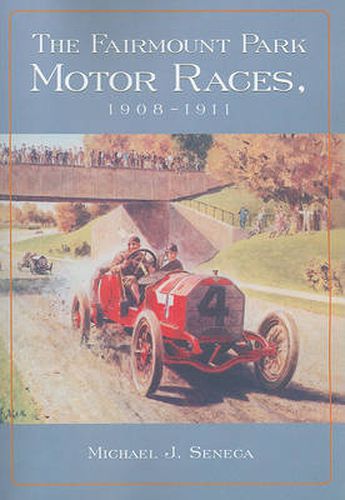Readings Newsletter
Become a Readings Member to make your shopping experience even easier.
Sign in or sign up for free!
You’re not far away from qualifying for FREE standard shipping within Australia
You’ve qualified for FREE standard shipping within Australia
The cart is loading…






For four years, early in the last century, the Fairmount Park Motor Races were run on an eight-mile course in Philadelphia’s West Fairmount Park. They drew half a million spectators the first year, but surprisingly they have been overlooked as part of automobile racing history and as part of the history of Philadelphia. In contrast to other racing events, such as the Vanderbilt Cup, there were never any serious injuries and not a single death, but after four years of spectacular racing, the event was banned, with safety concerns cited. Opening with a brief look at automobile racing prior to 1908, the book covers the events leading up to the first race. It discusses the proposal to have a race in Fairmount Park and the reasons why Philadelphia, and the park in particular, was such an unlikely place. Both the on-track action of the races and the off-track events that affected them are described. Dr. J. William White’s successful crusade, following the 1911 outing, to stop the races is examined, as are attempts to revive the race in the following six years, including Philadelphia’s attempt to compete with Indianapolis by constructing a two-mile oval speedway, and the city’s eventual exit from automobile racing.
$9.00 standard shipping within Australia
FREE standard shipping within Australia for orders over $100.00
Express & International shipping calculated at checkout
For four years, early in the last century, the Fairmount Park Motor Races were run on an eight-mile course in Philadelphia’s West Fairmount Park. They drew half a million spectators the first year, but surprisingly they have been overlooked as part of automobile racing history and as part of the history of Philadelphia. In contrast to other racing events, such as the Vanderbilt Cup, there were never any serious injuries and not a single death, but after four years of spectacular racing, the event was banned, with safety concerns cited. Opening with a brief look at automobile racing prior to 1908, the book covers the events leading up to the first race. It discusses the proposal to have a race in Fairmount Park and the reasons why Philadelphia, and the park in particular, was such an unlikely place. Both the on-track action of the races and the off-track events that affected them are described. Dr. J. William White’s successful crusade, following the 1911 outing, to stop the races is examined, as are attempts to revive the race in the following six years, including Philadelphia’s attempt to compete with Indianapolis by constructing a two-mile oval speedway, and the city’s eventual exit from automobile racing.